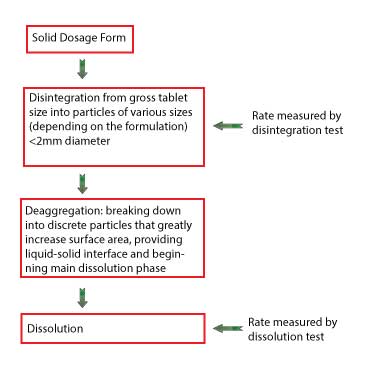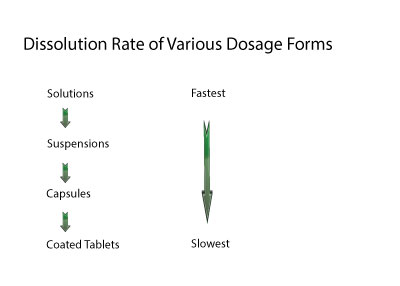Theoretical Concepts of Dissolution
Theoretical Concepts of Dissolution
The basic definition of dissolution rate for a solid dosage form is as follows:
‘The amount of active ingredient in a solid dosage form dissolved in unit time under standardised conditions of liquid-solid interface, temperature and media composition.’
First it is helpful to look at the way that a tablet breaks down and begins to dissolve. This refers to disintegrating tablets which make up a good proportion of the type of dosage forms tested

It is not unusual during dissolution testing to see particles moving towards the base of the vessel or moving around in the media. The behaviour of these particles effect the dissolution rate and so it is useful to look at this in more detail later
Dissolution Rates of Dosage Forms
There are many kinds of dosage forms of course and all of them have a dissolution rate. The dissolution time can range from seconds to hours or even days for implants

Of course there are other dosage forms such as patches, implants, creams etc. but the principles remain the same.
The interface between the dosage form, and in particular the particles after deaggregation, and the dissolution media is critical and is known as the Shear Rate.


